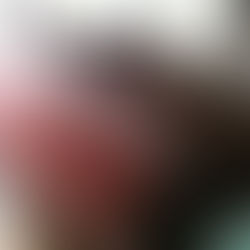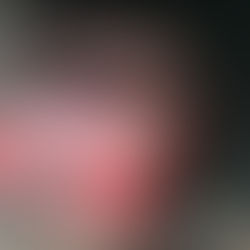33 - Hanging doors
- andycbryant
- Oct 28, 2018
- 5 min read
A lot of repair work had been carried out around the pillars and on the doors themselves. Coupled with the fact that the shims were rotten plywood, there was no source of reference for refitting them. With that in mind a variety of strengthening plates and shims were made in Stainless, brass and mild steel.

All the internal components had to be gathered up from the various "safe" places I had put them. One item that required attention was one of the door glasses that was mounted in the winder channel at an angle. This had been like this for many years as the glass fibre has scratched the glass.

Removing and fitting the glass from the holder is a potentially dangerous operation. Applying excessive force, banging bits and not supporting the glass can easily result in the glass exploding. Having gathered some tips from the experienced, the channel was left to soak in penetrating fluid for a day or two to soften the plasticy gripping insert & any adhesive. The glass was then placed on a worktop & firmly held in place with the channel off the edge. This leaves the glass absolutely flat. Using a wooden off cut as a drift and light taps of a hammer I started at the end that had not dropped away from the glass. I did not want to exert any force on the glass as the channel moved and pivoted. Slowly movement was noted & once the channel was level, it was a case of tapping equally along its length to ensure it moved away from the glass. Once the material in the channel lost its grip on the glass it was easily removed. The material was covering corrosion caused by water running down the glass and collecting beneath the gripping material.

The material was probably supposed to be rubberised, but was hard & brittle. I have plenty of chassis tape left over as well as sealant that will make an adequate replacement.

With the channel removed care was taken to use the dirty marks to match the correct mounting position on the glass before it all gets cleaned.

All sealed back in place. Be sure to make sure you have fitted the channel to the correct side of the glass !

The quarter light assemblies drop into the frames and need securing carefully. The NOS seals had been folded in their packaging and refused to lay flat. This will be resolved by glueing them in place and using sealant to ensure any gaps do not draw in water.


The bottom of the quarter light glass channel and the channel the other side are secured by small nuts and bolts hidden behind the felt or on lugs. The excess felt is pushed back into the channel and folded over the rubber stop to add some cushioning for the glass in the fully lowered position. It was at this point i realised the glass had to be put in along with one of the channels as it cannot be just dropped in !

The winder mechanism is lubricated and placed into the door. I had to use a winder handle to manipulate the mechanism in order to get the runners into the channel on the glass.



With the runners in their channel the mounting plate was prepared and placed. The winder mechanism can then be annotated by using a winding handle so that the bolt holes line up. Given the corrosion these parts suffered I will be using stainless fastenings and copper grease.



There is not a lot of room to work.

The door catch remote mechanism utilises a rod to operate the catch and on the passenger side, the remote locking feature. The original is covered on a felt to prevent rattles.

Some NOS units were sourced due to corrosion concerns & the rods were covered in some sound deadening material. I later discovered that this is too thick in places and causes contact with the winding mechanism, so needed trimming.

The rods are held in place using simple clips & rivets.

I had the idea of fitting nuts and bolts instead. But again, a good idea led to fitting problems due to the lack of working space in the door.

The lock mechanism fastens to the rod by means of this clip. Attaching these with the rod attached to the remote was a difficult task. It was then easy to see why the rod used a push on clip fastening at the other end !

The hinges bolted to the door & I used strengthening plates on the inside where possible. There is a not a lot of room for using large washers in some places. You can see how badly damaged the hinge area of the drivers door was.



Loosley fitting the doors showed serious alignment problems. Door contact with the body caused paint damage, so a line of tape was used to try and provide some protection. The whole door hanging process was convoluted and impossible without two people. The doors were removed and replaced dozens of times. The mounting holes had to be adapted. It was found that the door holes could be elongated one way & the pillar holes the other. This enabled movement of the door in and out as well as up & down without over enlarging the bolt holes. It was then a process of adding various shims to align the hang of the door. It was a demoralising process as the bolts and/or shims would fall off at a crucial moment.




Due to the frequency with which the nuts were undone I decided to remove the nylocs & only replace them when the doors were ready to be finally bolted down. It may have been better to also temporarily use much longer bolts that would enable the door to be drawn out, shims dropped on and refitted without having to take the door completely away and go through the effort of re threading the bolts. There is little room to get to the back of the bolts & someone on the outside is essential to hold the door in place whilst the nuts are gradually tightened.


This is the passenger side & you can see the repaired hinge I fitted. This proved to be a nightmare as the door had to be manipulated in order to pass the now taller hinge through the aperture in the pillar. This meant taking the hinge off the door at the bottom each time adjustments were made. It just wasn't practical so one of my good condition spare hinges was restored and fitted.


After days of hard work I finally had doors that shut, didn't scrape the bodywork & looked fairly flush. They are not entirely square in the door opening, but attempts at adjusting that just upset how the door engaged with the dovetail mechanism.






The door cards needed a thorough clean & some of the corners repaired. Note the differing colours of the gel coat on each side of the car.



The boot lid needed to be fitted before it picked up more edge wear to the paint. The extra holes for feeding the wiring to the numberplate light would come in handy.

With the mountings adjusted, a good fit was achieved and the rod fitted the tank perfectly. The securing wire was fastened to the tank via stainless nut and bolt rather than pop rivet.

The extension wires for the numberplate light were easily fed into position.

And a brand new light unit fitted.

Along with a brand new lock handle and catch. The mounting features some small lugs not present on the original so the screw holes required one side trimming to take them. A new gasket helps seal the rear of the handle.


























